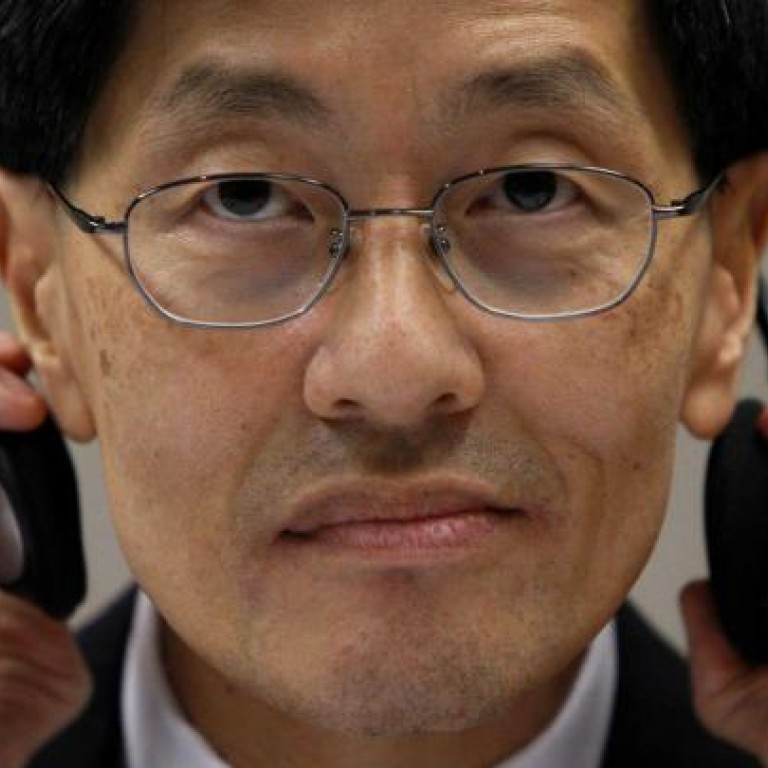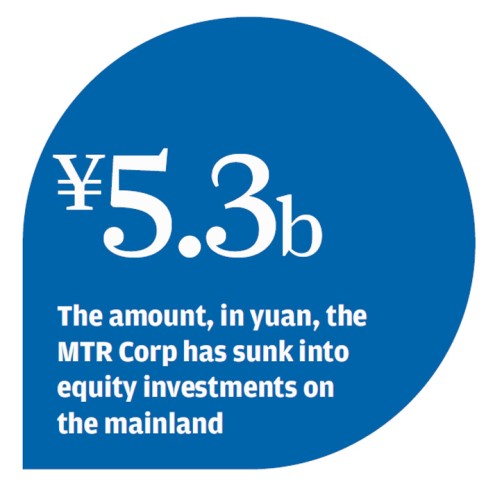
A lot on the line
MTR Corp has fixed its sights on getting into the mainland's burgeoning metro railway sector, but its business model may hit the buffers
Urban railway operator MTR Corp wants to export the successful property-plus-rail model it operates in Hong Kong to the mainland, but faces obstacles in laws relating to the sale of land.

"We'd like to grow and develop in the cities we operate in [and] we want to explore new cities. China's metro plan creates a lot more opportunities for us to develop in more cities than we have today."
MTR had made 5.3 billion yuan (HK$6.6 billion) of equity investments on the mainland, Leong said. It operates four metro lines in Beijing, Shenzhen and Hangzhou.
"The integrated rail and property model must be the option to finance metro rail development in China. Passengers alone cannot provide adequate commercial returns," Leong said at the recent Asia Pacific Rail summit.
In last October last year, then premier Wen Jiabao called for more integration of land use with public transport to enable the sustainable development of the country's metro railways, Leong said.
Its metros would more than double in size from 2,064 kilometres in 17 cities to 5,300km in 35 cities by 2020, he said.
"The opportunities for us in mainland China are tremendous," he said.
In September, MTR signed a memorandum of understanding with the government of Foshan in Guangdong, Guangdong Provincial Railway Construction Investment and China Merchants Group to study co-operation on the Guangzhou-Foshan intercity loop line.
MTR and the Foshan authorities were looking at adopting the "station-premises-plus-community" model for part of the line, an MTR spokeswoman said.
"Station premises plus community is similar to the rail-plus-property model in Hong Kong," she said. "The land sale on the mainland will follow state land policy, where land for this project will be sold by auction instead of private grant."
MTR runs a metro line in Shenzhen that bears similarities to its Hong Kong business model. The 6 billion yuan Line 4, also called Longhua Line, carries 350,000 passengers a day.
In August 2011, MTR acquired the rights to a piece of land above the Longhua Line depot for 2 billion yuan, the spokeswoman said. Because MTR won the land-use rights in open bidding, separately from the rail line, the site did not qualify as a rail-plus-property project in strict terms, but because the property was integrated into the metro line, it was a rail-plus-property operation in practice, she said.
Land on the mainland was sold mostly by public auction to the highest bidder, which made the adoption of Hong Kong's rail-plus-property model difficult, said Wang Jiangyan, an executive director of the China Sustainable Transport Centre, a non-governmental organisation.
"To accept Hong Kong's rail and property model, the mainland needs to do a lot of work on land policy," Wang said. "So far, there has been no breakthrough in China's land system."
Apart from a few cities, such as Kunming and Beijing, Hong Kong's rail-plus-property model had not been widely adopted on the mainland, she said.
A transport consultant who asked not to be named said: "Land acquisition is getting more difficult in China. The government wants to protect the rights of local residents."
Under the Railways Ordinance, the Hong Kong government is empowered to acquire land for rail development at market prices, but the mainland lacked similar laws, the consultant said.
And mainland cities were not as densely populated as Hong Kong, so the commercial returns from the rail-plus-property model in those cities might not be as high, the consultant said.
Bryant Lu, a vice-chairman of Roland Lu & Partners, a Hong Kong architectural firm, said mainland cities should consider adopting Hong Kong's rail-plus-property model as it would increase the value of the land around stations and generate more economic activity.
"It is never easy to do new initiatives in China, but the conditions of a new metro railway system and a new [national] leadership are right for MTR to export the rail-plus-property model," Lu said.
So far, MTR's mainland property revenue has not been significant, rising 3 per cent to HK$136 million last year.
MTR owns 49 per cent of the 48km Hangzhou metro Line 1, which opened in November and carries 150,000 passengers daily.
In November, Beijing MTR Corp, which is 49 per cent owned by MTR, signed a public-private partnership agreement with the city's government to build and operate the 50 billion yuan metro Line 14 in the capital.
Beijing MTR is expected to invest 15 billion yuan in the project and will receive an equity contribution of 2.2 billion from MTR, according to media reports.

